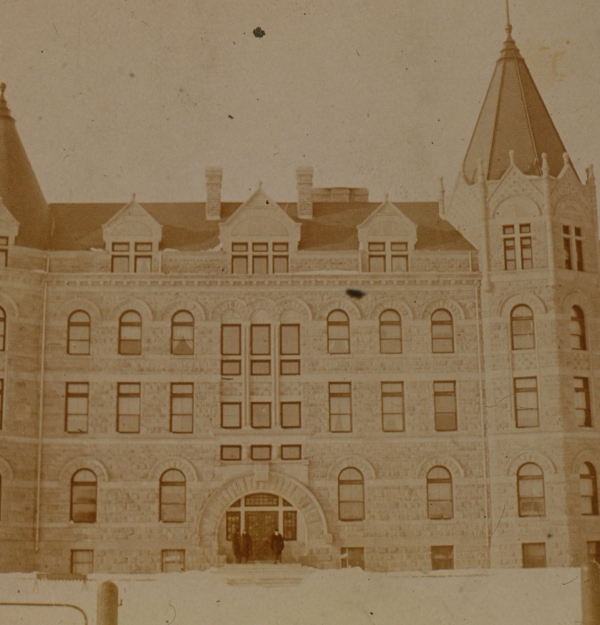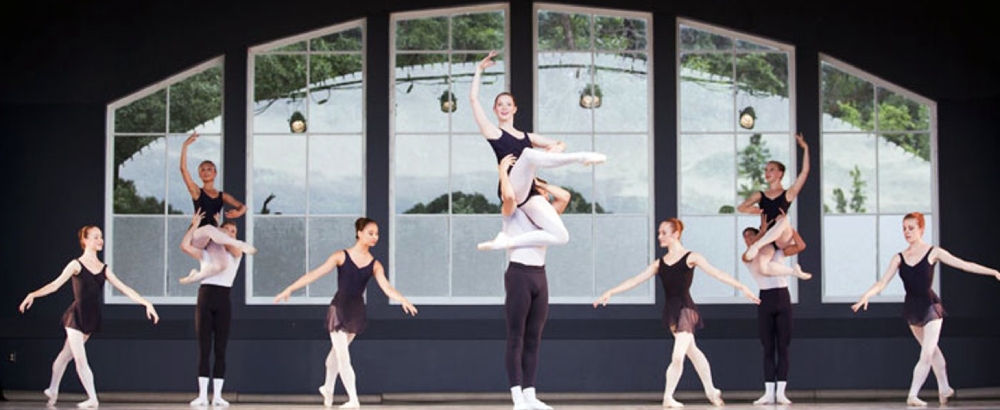The University of Winnipeg Collegiate: A Timeline of 150 Years of Excellence
1873 – Wesleyan Educational Institute established
Though most associated with its iconic home at Wesley College in the heart of downtown Winnipeg, the Collegiate’s roots date back to 1873 and the establishment of the Wesleyan Educational Institute, a preparatory school operated by the Methodist church until 1877.
Located at the corner of Water Ave. and Main St., steps from what is now the famed Portage and Main intersection, the Wesleyan Educational Institute opened in November 1873 and welcomed 47 pupils through its doors. Though steadily increasing its attendance to a high of 71 pupils over the course of the next four years, the institution would ultimately shutter in 1877.

1877 – Wesley College receieves its charter
In the same year Wesleyan Educational Institute closed its doors, the Manitoba Legislature passed an act to incorporate Wesley College. However, the school would not officially open for more than a decade.
1888 – Wesley College opened under Principal Sparling
After the Wesley College Board of Directors passed a resolution in 1887 to take steps to open the institute, the securing of funds began, and, in 1888, Reverend Joseph Walter Sparling was selected as the institution's first principal. By October, Dr. Sparling and staff began welcoming preparatory students, though the first students did not arrive at the modern campus. Rather, students attended classes inside Grace Church on Notre Dame Ave. At the end of the first term, Wesley College had seven students but would soon grow exponentially.
In subsequent years, Wesley College would move to new homes, first on Albert St. and later on Edmonton St., to accommodate its growing student body.
1894 – Dr. Sparling lays Wesley Hall cornerstone
Over the next several years, the steady growth of the College laid the foundation – figuratively and then literally – for the construction of Wesley Hall. After hosting seven students in its first term, Wesley College had reached 40 students by its second, and attendance continued to climb. To meet the increased demand for space, some classes were held off site, making clear the need for for Wesley College to find a permanent, and larger, home.
In 1894, plans were made public for a permanent home on Portage Ave., designed by architects George Browne and Samuel Frank Peters. Excavation on the site began in March, and three months later, in June 1894, Dr. Sparling laid the cornerstone and set construction in motion.

1896 – Construction completed on Wesley Hall
Despite minor delays, construction of Wesley Hall remained largely on track throughout the next two years, meeting important milestones along the way. In the early summer of 1895, a flag was flown to indicate that the highest point of the structure had been reached, and the limestone facade and accompanying stonework was completed throughout the summer and into the fall. Though initially believed construction would be complete by October 1895, Wesley Hall was not ready for students until January 1896. Opening ceremonies, however, took place in June 1896, with a service held in Convocation Hall.
1912 – Sparling Hall opens its doors
In the intervening years, expansions continued around Wesley Hall, not least of which was the opening of Sparling Hall, then known as the Matriculation Building, in 1912. The building served as a women's residence until the 1960s. In 1934, a new wing was added to the north side of the building. Then designated as a library space, the basement of this wing would later house Tony's Canteen, which officially opened in 1936.
1938 – United College established
Amidst physical changes on campus, Wesley College entered into an experimental partnership with Manitoba College. However, this partnership, which saw the institutions operate as the United Colleges, was short lived, beginning in 1913 and ceasing in 1914. In the years that followed, Manitoba College ceded its teaching of the Arts in favour of continuing and strengthening its focus on Theological education.
By 1926, however, Wesley College and Manitoba College joined the United Church of Canada and reached an agreement to provide their programs as one body while maintaining individual charters, faculties, and courses. Come 1931, Manitoba College sold its building and began leasing space at Wesley Hall. This arrangement, as well as the relationship between the insitutions, led to the eventual amalgamation of the two colleges.
1967 – The University of Winnipeg is born
Throughout its days as United College, the preparatory school remained a fixture of the insitution's offerings, and it remained so as the student body continued to expand. It was in 1961 that then-United College principal Dr. Wilfred Lockhart sought to create a report on post-secondary education in Manitoba to present to the provincial government, which laid the groundwork for the formation of the Council of Higher Learning in 1965. Recommendations made by the Council would ultimately lead to The University of Winnipeg being granted its charter in 1967.
1997 – The Collegiate expands to Grade 10
With a growing student population, including preparatory students – which were later called matriculation, collegiate, and high school students – the Collegiate considered ways it could better serve the community and educational opportunities for students throughout the city, province, country, and beyond.
Among the considerations was the expansion of its curriculum to include Grade 10 students, and it was in the late-1980s and into the early 1990s that the Collegiate went through the process of making this expansion a reality. In 1997, after years of careful consideration and thoughtful planning, the Collegiate proceeded and opened to Grade 10 students. Not only did this allow the Collegiate to offer a full high-school program, it made it more accessible and appealing to all students, including international students.

2007 – Grade 9 and the Royal Winnipeg Ballet
In December 2005, the University of Winnipeg and Royal Winnipeg Ballet School announced a landmark partnership to make the Collegiate the high school of choice for the Royal Winnipeg Ballet School. The designation would be later made more official when the Collegiate became the RWB's official academic partner. As a result of this partnership, the Collegiate began offering Grade 9 courses, again broadening the scope of its education.
2008 – The Model School opens
Developed in collaboration with former UWinnipeg President Dr. Lloyd Axworthy, Kevin Chief, and Collegiate Administration, the Model School launched in 2008 with the goal of providing students with the opportunity and the support needed to graduate from high school and prepare for post-secondary education. The students enrolled in the program are from backgrounds that have traditionally been under-represented in both high school and post-secondary graduation rates.
Each year, more than 60 students from grades nine through 12 participate in the program, and more than 130 Model School students have graduated to date. Nearly 90 per cent of Model School students graduate and more than 80 per cent pursue post-secondary education.
2017 – Revitilization of Leatherdale Hall and Tony's Canteen
In 2015, the generous gift of $2.5 million from Dr. Douglas W. and Mrs. Louise Leatherdale led the way for the construction of Leatherdale Hall, adjacent to Convocation, Sparling, Centennial Halls. Ground was broken on the new space in 2016, with construction of the nearly 6,000-square foot, two-storey addition completed in 2017.
The opening of Leatherdale Hall allowed for the resurrection of Tony's Canteen. Originally opened in 1936 and continuing operation after operator Tony Kozyra's passing in 1965, the canteen was originally shuttered in 2007. However, long beloved as the central hub for students, staff, and faculty of the Collegiate and University, the return of a reborn Tony's Canteen to campus – now located in Leatherdale Hall – was a joyous occasion.

